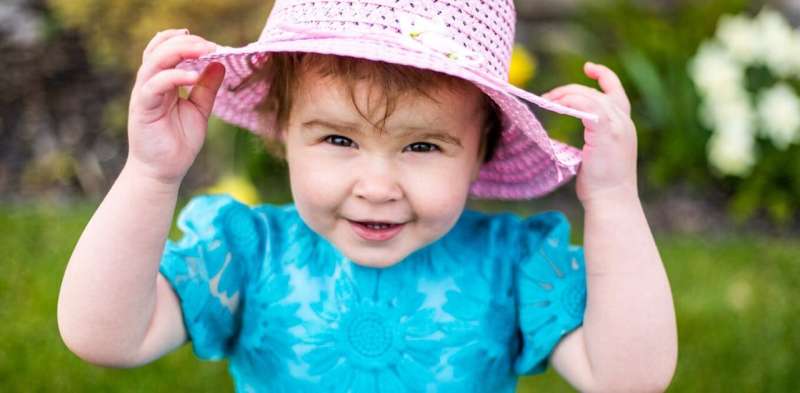
As a speech pathologist, university lecturer and parent of young children, I often get asked a version of the following:
“My child isn’t talking yet. Is that a problem? And is it my fault?”
There is never a simple “yes” or “no” response, as more information is always needed. But by the end of the conversation, I nearly always end up saying “it’s worth looking into”.
The “wait-and-see” approach for late talkers—those who seem to be lagging behind the spoken communication of their peers—recommended by previous generations has shifted as we learn more about early childhood and how intervention can help.
Who are late talkers?
Late talkers are children who do not speak by the usual time that others are off and chattering. They do not have a diagnosis or “primary cause” such as autism spectrum disorder, an intellectual disability or hearing loss.
Late talking is not an official diagnosis in the Diagnostic and Statistical Manual of Mental Disorders so clinical cut-offs vary. The most common definition is that late talkers do not have 50 words and/or do not use two-word combinations by two years of age. Others believe this definition is inadequate.
Research tends to divide this population into two categories, those children who only have issues using words (that is, they understand words) and those who have issues with both expression and comprehension.
Late talking is fairly common, with 13–20% of two-year-olds meeting the criteria. Children are generally assessed for late talking between two and three years via observation by a speech pathologist and parent reports. Parents are asked to provide details of any speech or language disorders in the family, how their child communicates and checklists of the words they understand or speak.
This information is then compared to a large sample of children, to see if they fall within the “normal range” for the number of words they know and use.
Will my late talker grow out of it?
Around 50% of children will “out-grow” their language difficulties. This explains why the “wait-and-see” recommendation has been popular for many years. But there are several problems with this approach.
Firstly, late talkers may not fully catch up. “Late bloomers” have been found to underperform in language and literacy measures in the later primary school years and beyond. So, while a late talker may improve, they may face ongoing but perhaps more subtle difficulties at a later age, when language skills are critical to academic success and socialization. Seeking early treatment may mitigate this risk.
Secondly, late talking can have negative impacts for the child during their toddler years. A child who has few words may seem frustrated, withdrawn or aggressive. Such behaviors are more common among late talkers, likely because they lack the words to express feelings or wants. Parents may feel their children’s participation in family life and school or day care is being limited. Treatment may help the child to catch up to their peers and/or find alternate ways to communicate, which can improve participation.
Lastly, but most importantly, the presence of early language difficulties is a significant risk factor for ongoing language difficulties, often diagnosed as developmental language disorder.
This disorder occurs in at least one in five late talkers and can have substantial lifelong impacts on everyday functioning. Academic performance at school, self-esteem, mental health and employment opportunities are all negatively associated with a developmental language disorder diagnosis.
The tricky part is we cannot accurately predict which late talkers will go on to develop typical language skills, and which ones will later be diagnosed with developmental language disorder.
What are the risk factors for ongoing language problems?
While is no single predictor that allows us to know for sure which children will face ongoing language problems, potential factors include being born male, a family history of language disorders, socioeconomic status, low birth weight and vocabulary size (both speaking and understanding). Disorders of speech and language cluster in families with genetic inheritance a significant factor.
Reading disorders such as dyslexia are often associated with language difficulties. Other factors often mentioned by parents, such as a history of ear infections or having older siblings (who might “do the talking for them”) do not increase the likelihood of language disorder.
Socioeconomic status and how parents interact with their children are risk factors found in research, but they are difficult to separate from the intergenerational impacts of language disorders. Parents with language problems may interact or communicate differently with their children and pass on an increased likelihood of the same traits. In most cases, not all the children in one family will be late talkers, so the environment may be one part of the puzzle. Parents should feel reassured they haven’t “caused” a language delay by speaking too little to their child.
Encouraging early talk
Speech pathologists now take an active but cautious view: intervene rather than watch and wait.
Intervention can be very helpful, consisting of training for parents.
Techniques can include:
- recognizing and encouraging the other ways a child might be communicating (such as eye gaze, pointing, vocalizing)
- following the child’s interest during play
- pausing more to notice and encourage the child’s communication
- reducing frequent questioning (“What’s that?” “Who’s talking?”)
- instead, using more language when interacting, such as describing play (“I’ve got the green playdoh. I might make a snail”).
Importantly, a recent systematic review examined the results from 34 different intervention studies and found that 93% of them reported improvements in expressive vocabulary for late talkers.
So, when I am asked if late talking is a problem, I stress there is no evidence parents are the cause of their children’s difficulties and there is help available. If your child isn’t speaking as much as other children of the same age, it’s worth looking into it.
Provided by
The Conversation
This article is republished from The Conversation under a Creative Commons license. Read the original article.
Source: Read Full Article
